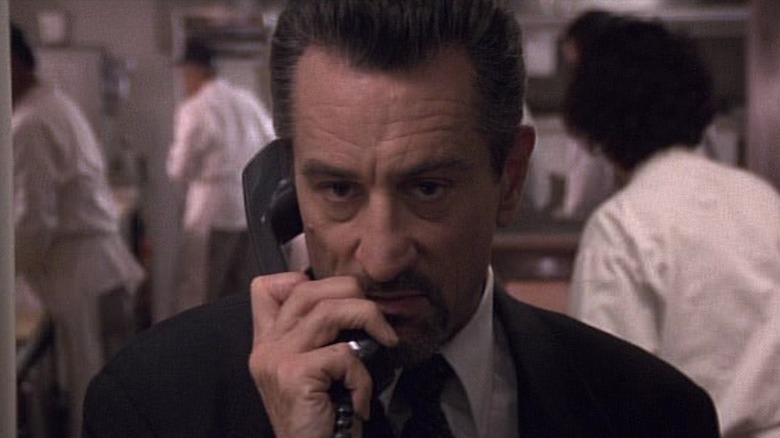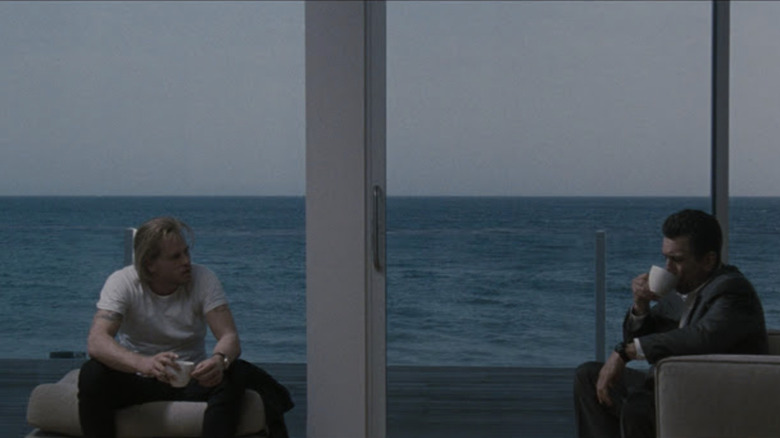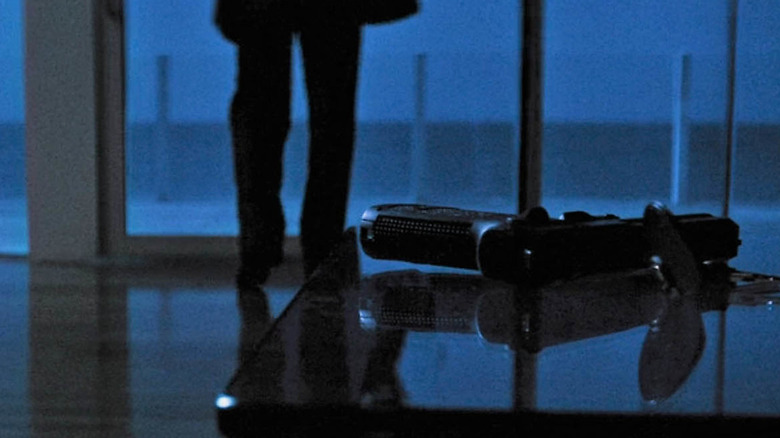Robert De Niro's House In Heat Was A Window Into His Character's Mind
"Don't let yourself get attached to anything you are not willing to walk out on in 30 seconds flat if you feel the heat around the corner." In "Heat" that's the motto of professional thief Neil McCauley (Robert De Niro). Bank robbery isn't a career that leaves a lot of leeway for personal attachment. The rest of Neil's crew have families, but their leader lives alone; it's clear his new relationship with Eady (Amy Brenneman) is the first time in a long time that he's let anyone in.
As a lone wolf, Neil doesn't dwell in the quaint suburbs like his partners Chris Shiherlis (Val Kilmer) and Michael Cheritto (Tom Sizemore). No, instead he's settled in a beachfront bachelor pad with not even much furniture for company. If it wasn't obvious, director Michael Mann confirms that this setting complements the character; Neil's empty house is used to illustrate the loneliness of the lifestyle he leads.
Portrait of a lonely criminal
In our first look at Neil's house, he leaves his gun on the table. The still possessions are shot in close-up before the camera tilts up to a wide shot of him staring out at the ocean from the balcony. This moment is a near recreation of Pacific, a 1967 painting by Canadian painter Alex Colville which evokes similar feelings of longing and solitude. Unlike Colville's naturalistic colors, Mann's shot has a palette soaked in dark blue, reflecting both the ocean-side setting and melancholic mood.
Speaking to LA Weekly, Mann recalled that a "challenge" with finding locations for "Heat" was ensuring that each one evoked the proper emotions of the scene. Neil's house was no exception:
"It all starts with scene analysis: the dramatic content of the scene, what the scene is telling us, how should it make the audience feel. I want you to feel the alienation of somebody who has the absolute minimum in that place. He lives in a world of abstraction. That's why I picked that location, with the ocean out the window. And the windows are kind of dirty, you know — he doesn't pay much attention to maintenance. He'd probably have a fork and a knife and a spoon, a coffee maker, and that's about it."
Later in the movie, after Chris has a fight with his wife Charlene (Ashley Judd), he crashes at Neil's place. Since there's no couch, he sleeps on the floor with a pillow. When the two men have coffee in the living room, we get glimpses of just how clear the house is. The cabinets are empty aside from a couple of neatly stacked plates and utensils. There's no furnishing on any of the walls, which are painted white to boot. A world of abstraction indeed.
Revisiting the abstract
"Heat 2," the sequel/prequel novel to the film published this year, revisits this house. In chapter 2, Detective Vincent Hanna (Al Pacino) investigates the now ownerless house mere hours after shooting McCauley. He finds no ghosts or echoes of the man he killed, just an empty, soulless space. With the book's mix of staccato rhythm and extreme detail that makes it feel so much like a Mann movie, Hanna considers:
"McCauley didn't live here, in this white space. He slept here, ate here, drank the single malt fom the one bottle on the county. McCauley never inhabited the place. It had been a way-station... he's trying to feel Neil's presence, standing where Neil stood, seeing what he saw. A certain melancholy holds him to the hardwood floor. A life gone, irreversible, a man he knew."
Whether he's directing a movie or writing a novel, setting is a priority in Mann's scene constructions. His characters and worlds gain all the more depth because of it.


